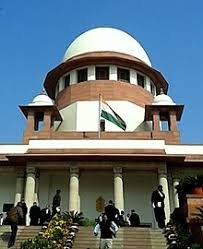The appellant, Padman Bibhar, was convicted by the Trial Court under Sections 302 (murder) and 201 (causing disappearance of evidence of offence) of the Indian Penal Code, 1860, for the death of Akash Garadia. He was sentenced to life imprisonment and a fine for murder, and two years’ imprisonment and a fine for causing disappearance of evidence1. This conviction was subsequently affirmed by the High Court of Orissa.
The prosecution’s case was that on 4 April 2016, the informant’s son (the deceased, Akash Garadia) along with PW-1 and PW-2, and the appellant, had gone to a river near the village to bathe1. From there, the appellant and the deceased went to a cashew field to collect cashews, but the deceased did not return for a long time1. PW-1 and PW-2 returned to the village and informed the informant (PW-3), who then inquired about his son’s whereabouts14. PW-3 later found his son’s dead body floating in the river the next morning, 5 April 2016, and lodged a First Information Report (FIR) alleging the appellant had killed his son and thrown the body in the river.
The Trial Court had based its conviction on the evidence of the appellant and deceased being ‘last seen together’ and the recovery of a weapon, deeming these circumstances sufficient to complete the chain of circumstantial evidence. The prosecution examined witnesses and proved documents, including a blood-stained stone.
Law Involved
The key legal provisions and principles revolved around:
- Sections 302 and 201 of the Indian Penal Code, 1860: The specific criminal charges against the appellant.
- Circumstantial Evidence: The fundamental principle that in cases based on circumstantial evidence, the prosecution must cumulatively prove each circumstance to form a complete chain where there is no escape from the conclusion that the crime was committed by the accused, and the facts proved must unerringly point towards the guilt of the accused.
- ‘Last Seen Together’ Theory: This theory, while relevant, is a weak piece of evidence and conviction cannot solely rest on it without other corroborative evidence…. It requires that the time gap between when the accused and deceased were last seen alive and when the body was found must be so small that the possibility of any other person being the author of the crime becomes impossible.
- Proof Beyond Reasonable Doubt: Suspicion, however strong, cannot substitute proof The prosecution must establish guilt beyond all reasonable doubt, and any benefit of doubt must be given to the accused.
Reasoning
The Supreme Court meticulously analysed the circumstantial evidence, highlighting several crucial weaknesses and inconsistencies:
- ‘Last Seen Together’ Discrepancies: While PW-1 and PW-2 testified to being with the deceased and appellant, their accounts regarding the appellant’s return and the deceased’s disappearance had contradictions…. PW-1 stated the appellant did not return, while PW-2 stated he did. Both stated the appellant did not inform anyone about the deceased not returning. PW-1 and PW-2 also mentioned that after bathing, the appellant and deceased went to eat cashews. PW-1 and PW-2’s initial statements about the appellant’s whereabouts and what they were doing at the river were not entirely consistent.
- Delay in FIR and Discovery: There was an unexplained delay of six days in lodging the FIR after the deceased was last seen alive. The dead body was also recovered seven days after the last seen incident. This substantial time gap weakens the ‘last seen together’ theory significantly, making it impossible to rule out the possibility of other persons being involved.
- Motive and Weapon: The prosecution failed to establish a clear motive for the crime7…. Although PW-13 (the deceased’s cousin) mentioned the appellant’s wife’s illness and suspicions of illicit relations, this was not recorded in his Section 161 Cr.P.C. statement and could not be relied upon. Furthermore, the blood-stained stone allegedly used as a weapon was recovered near the dead body, but the chemical examination report was inconclusive, and the blood group did not match. The Investigating Officer also did not record any memorandum statement of the appellant regarding the stone.
- Lack of Corroboration: The Court emphasised that the ‘last seen together’ evidence was a weak piece of evidence, and without strong corroborative evidence forming a complete chain of circumstances, it was insufficient to convict810. The inconsistencies in witness testimonies, the delay in the FIR, and the inconclusive forensic evidence meant the chain of circumstances was not complete and did not unerringly point to the appellant’s guilt….
Holding
The Supreme Court allowed the appeal.
- The Court found that the prosecution had failed to prove its case beyond reasonable doubt.
- It concluded that the evidence of ‘last seen together’ was not sufficiently conclusive, and there was no other incriminating material against the appellant .
- Consequently, the conviction and sentence imposed by the Trial Court and affirmed by the High Court under Sections 302 and 201 IPC were set aside.
Padman Bibhar V. State Of Odisha
Supreme Court: 2025 INSC 751: (DoJ 21-05-2025)







